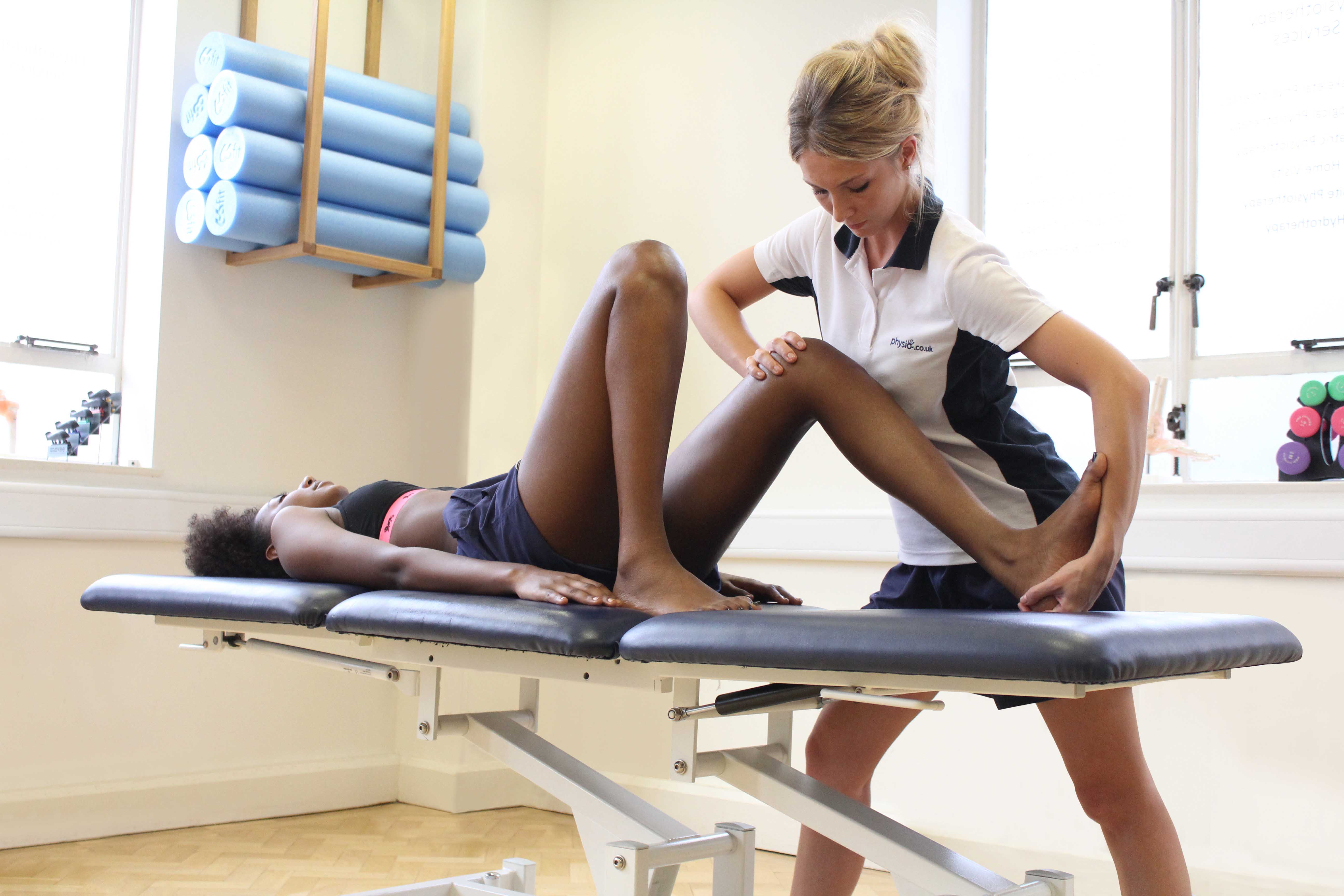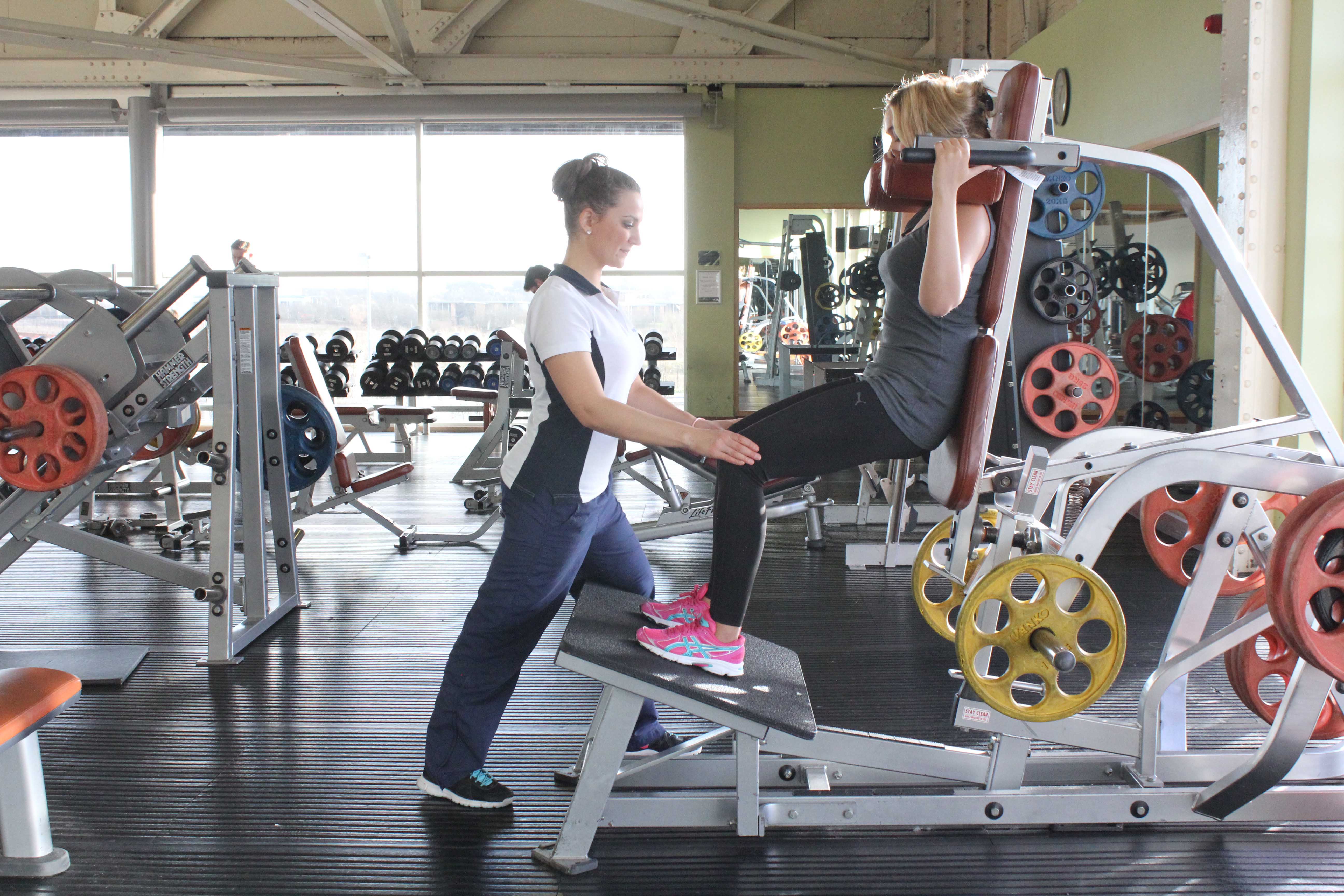What is a popliteus strain?
A popliteus strain is when the muscle fibres tear due to too much force being applied to the muscle.There are three categories a popliteus strain can be decribed as. These are:
- Grade one - damage to less than 5% of the muscle fibres.
- Grade two - extensive damage with more than 5% of the muscle fibres involved.
- Grade three - complete rupture of the popliteus muscle.
 Above: Therapist performing knee assessment
Above: Therapist performing knee assessmentWhat causes a popliteus strain?
There are many causes of acquiring a popliteus strain. It can occur following a road traffic accident or a fall when the knee is straightened prior to impact.Overusing the popliteus muscle may also result in a strain injury. Because the knee joint is a complex joint an injury to another structure can also cause an injury the popliteus muscle. For example, a high impact injury such as a rupture to your posterior cruciate ligament or sometimes even your anterior cruciate ligament can damage your popliteus muscle.
What symptoms caused by a popliteus strain can physiotherapy help with?
A popliteus strain can bring about a number of symptoms that a physiotherapist can help with. They may include but are not limited to:
- Pain at the back of the knee
- Swelling
- Decreased range of movement
- Decreased strength
- Decreased function
How is a popliteus strain diagnosed?
A popliteus strain requires a comprehensive subjective and objective assessment to be carried out by a physiotherapist. It is a difficult injury to diagnose because the popliteus muscle is covered by a large muscle, the gastrocnemius. The experienced physiotherapist will test the knee through various movements and palpation. If the knee cannot fully extend or flex and is met by a hard end feel then a popliteus strain may be suspected. The physiotherapist will also palpate the popliteus muscle for tenderness. Again, if this is positive then a popliteus strain may be suspected.
 Above: Progressive knee strengthening exercises supervised by therapist
Above: Progressive knee strengthening exercises supervised by therapistBenefits of physiotherapy for a popliteus strain?
Physiotherapy is vital if you have a popliteus strain. The aim of physiotherapy treatment is to:
- Decrease pain
- Increase strength
- Increase range of movement
- Return you to pre injury activities
What would physiotherapy treatment for a popliteus strain involve?
There are various physiotherapy treatment techniques that may be utilised for popliteus strain including:
- Soft tissue massage
- Trigger point therapy and soft tissue release
- Electrotherapy
- Exercise rehabilitation
- Training/orthotic advice
How do I arrange a physiotherapy assessment for a popliteus strain?
If you have a popliteus strain and think that you would benefit from seeing one of our experienced physiotherapists then you can either email us at office@..............or call us on 01…………
Summary
The popliteus muscle is a small muscle located at the back of the knee. When strained, it can cause pain and discomfort when mobilising and even at rest. It can be brought on suddenly or gradually, depending on the mechanism of injury. A physiotherapist will diagnose the popliteus strain and structure a specific treatment programme in order to decrease the pain and return you to function. To make an appointment with one of our specialist physiotherapists then you can either email us at office@...... Or call us on 0151………..

 0330 088 7800
0330 088 7800


































